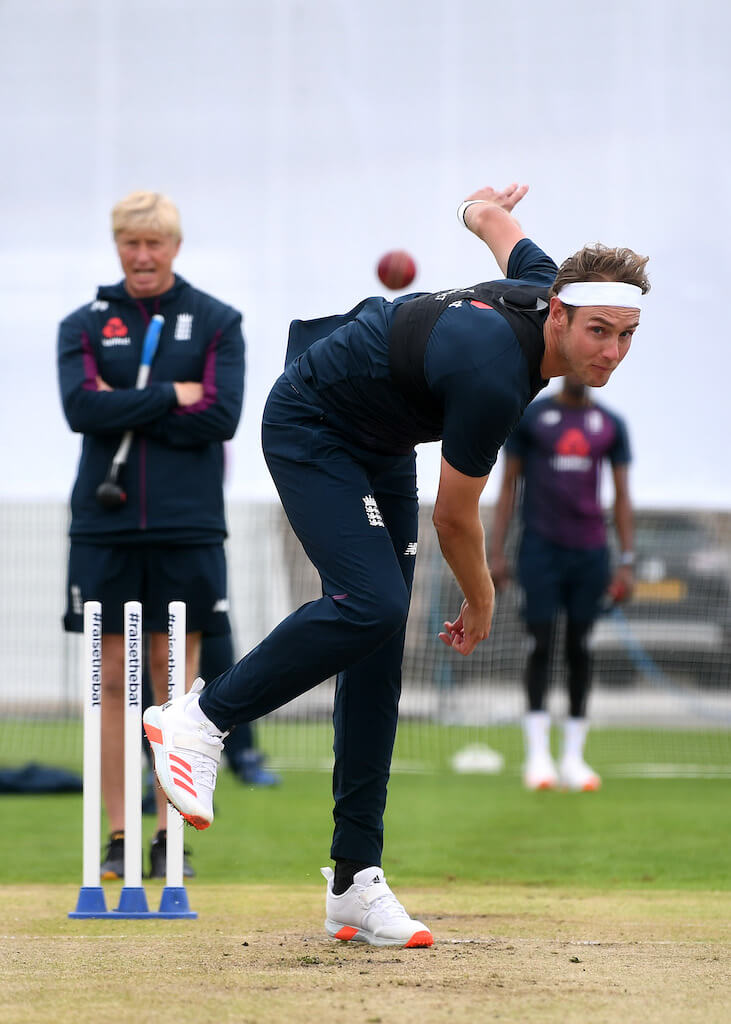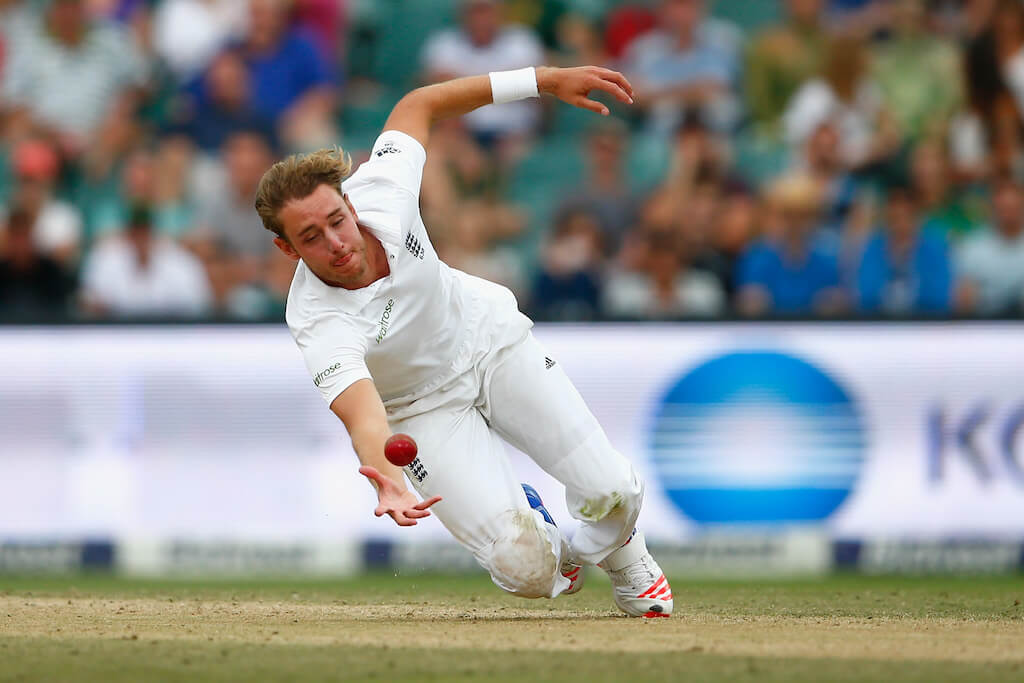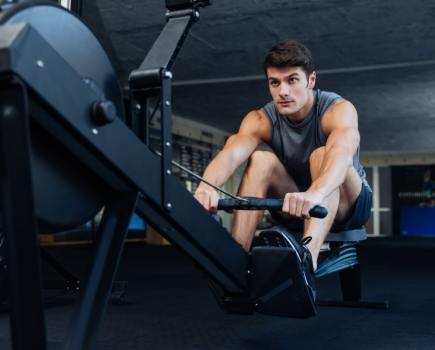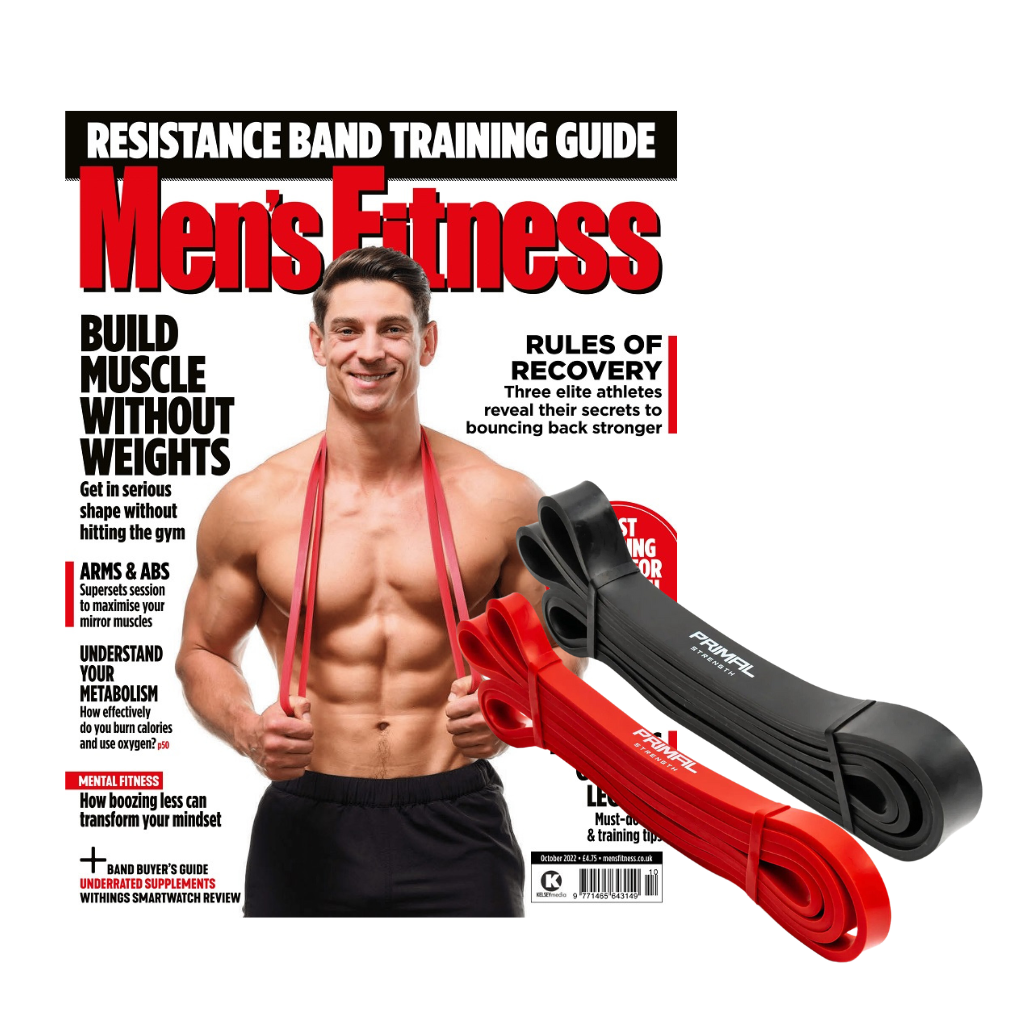Stuart Broad is England’s second-highest Test wicket taker of all time and a proudly patriotic four-time Ashes winner. The 35-year-old fast bowler – who has taken over 500 Test wickets – defeated the Australians in 2009, 2010-11, 2013 and 2015. He is now hoping to win his fifth Ashes title in the ongoing series Down Under.
The 6ft 5in paceman has the raw power to bowl balls at close to 140kph, but also the stamina to run 50km during a five-day Test match. Every time he bowls a delivery, Broad puts ten times his bodyweight through his lower body.
But he has diligently built up the durability, fitness and mobility to survive 149 grueling Test matches over the course of 15 years. And he has never allowed his lifelong asthma to slow him down.
Here the Nottingham-born athlete discussed the intelligent training that underpins his success.

Stuart Broad bowls during an England Nets Session at Emirates Old in July 2020 | Photography: Getty Images
Men’s Fitness: What unique physical qualities does a Test match fast bowler require?
Stuart Broad: Although we actually release the ball from our hand, so it looks like you bowl from your shoulder, you actually bowl from your legs. You need your legs to be strong. You also need good mobility through your lower back.
Bowling does need virtually every part of your body to be firing. So I’m someone who works a lot on my strength in my legs and my mobility, because over a five-day Test match you’re going to get stiff and sore. But one of the biggest things for fast bowling is being able to run.
In a Test match earlier this year the bowlers travelled 22-25k in two days. Obviously a lot of that is walking between fielding positions, but in any seven over spell, you’ve got 42 sprints. So being able to run, and to have the flexibility in your hamstrings and calves to be strong enough to run for that period of time, is important. And that’s only one innings.
In a full Test match you could do 50k. And that means recovery has really taken over a big part of my life.
MF: What strength and conditioning work do you do?
SB: My gym sessions are focused on leg strength and mobility, so a lot of lunges, weighted lunges and weighted step-ups. That’s because we spend a lot of time on one leg as a bowler. We can be slightly unbalanced, because you land on your right leg, with your right leg bent and your left leg straight. A lot of my gym sessions are to rebalance my body.
We also do box jumps and plyometrics. All that mobility, movement and awareness of your body has come in a lot more in the last five or six years. There was a period where big squats came in, but we found that we lost a bit of mobility and speed at the top level. There’s a lot more jumping now. I also use a Bosu, which I flip onto the wobbly side and try and stand on one leg and balance for a minute.
This is all based on developing kinaesthetic feeling. Maybe you’re landing at Lords, and there’s been a bit of turf dug out, and it’s uneven. This kind of training helps to create an uneven platform, so you’re training your body to be able to cope with that in a game.
MF: What are your main core conditioning drills?
SB: Pilates is very popular now within the group. That has given me quite a big appreciation of how important it is, but also how naturally strong bowling has made us in that area. I don’t do so much yoga, but Pilates and stretching are very important.
MF: What cardio work and fitness tests do you do?
SB: Our fitness testing has changed from the yo-yo test to a 2k time trial: simply completing a 2k as quick as we can. We have done that around the Lord’s outfield before. My running training will really vary. If I do three sessions a week, two would be strides and sprint-based work (see below). Then once a week I try and get in a 3-5k run.
DO THIS:
Stuart Broad’s ‘23/7’ pace and power workout
- Set up a 50m area – roughly the length of one half of a football pitch – to use as your sprint zone.
- Sprint the full 50m in seven seconds.
- Turn around and give yourself 23 seconds to recover and get back to the start.
- When those 23 seconds are up, sprint the 50m again in another seven seconds.
- After 6 x 50m sprints, have a two-minute break, and complete 4 sets in total.

Faf du Plessis of South Africa is caught and bowled by Broad during a Test match in 2016
MF: How have you managed your asthma during your career?
SB: I still deal with it on a daily basis but I’ve learned how to control it. And I’ve learned how to share my experiences with friends and teammates. It wasn’t always as easy as that. My teenage years were definitely the toughest times with my asthma, and it’s frustrating now, when I look back at how I was embarrassed. I just didn’t share it with my friends. I almost felt like I’d get judged at school, so I kept it a secret.
My mum was my mentor really, along with my GP Dr Wyatt. And I wish I had shared it because I share it now with my England teammates and there’s nothing to be scared of. I can sit here after playing 14 years of international cricket and say that it hasn’t hindered me in the slightest. Exercise was good for me – and good for my asthma.
MF: How do you recover quickly between games?
SB: Massage is quite important, but in specific areas. So I would generally try and get my right quad, my left hamstring and my thoracic back (spine) targeted in a mobility session or with our massage therapist Mark Saxby. I also use a Normatec recovery pump, which flushes lactic acid out of the muscles. Before training, the bowlers will meet up in the gym and do a bit of a mobility, recovery and stretching before we get going.
Cricket is not like some sports where they might only play once a week. We have five days performing to two days training. With most sports, it is five days preparation for one or two days playing. Recovery is really crucial for us.
MF: How did you prepare for the heat in Australia?
SB: Diet is huge. Making sure you get enough food and protein shakes in, as you really need to feed your body. That’s something our nutritionist has been working hugely with us on, because the heat expenditure and physical expenditure in Australia is so heavy.
We need to make sure we’ve got enough fuel to be able to cope with that. We were trying to change our eating habits before we left, so it all felt natural by the time we got to Australia.
MF: Finally, what’s the secret to your long and successful career?
SB: It’s natural for a fast bowler to pick up injuries early on in their careers, as their bodies are still getting used to the stresses and strains and the higher intensity. But I think part of picking up injuries at a younger age is because you haven’t quite worked out what training and recovery works for you. Jimmy (Anderson) and I have been fortunate to play for so long, because we learnt a lot from our early twenties about how to train and how to recover.
You’ve got to manipulate your training around how your body is feeling and be honest with the physios and strength coaches about how you’re feeling. That’s why this (England) environment is so brilliant, as it’s very open and honest. If you have got a really tight calf, it would be a poor option to go on long distance runs on soft ground.
We are here to perform, and need to do what you need to do to get yourself right. If that means you need two days away for your mental freshness, do it.
Stuart Broad is working with The Lung Letters campaign, which has been organised and funded by healthcare company Chiesi. For more information, visit lungletters.co.uk
Words: Mark Bailey








